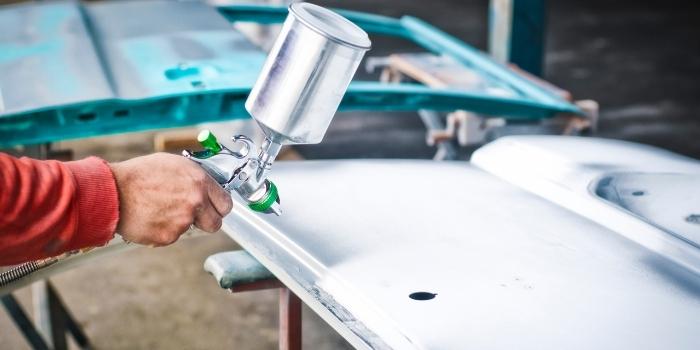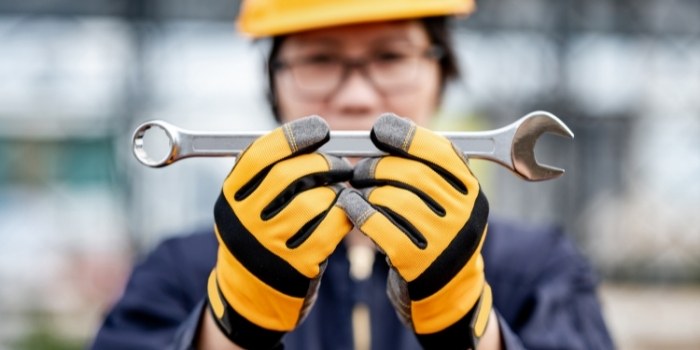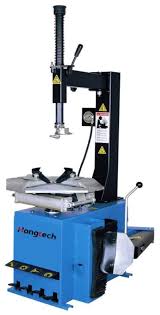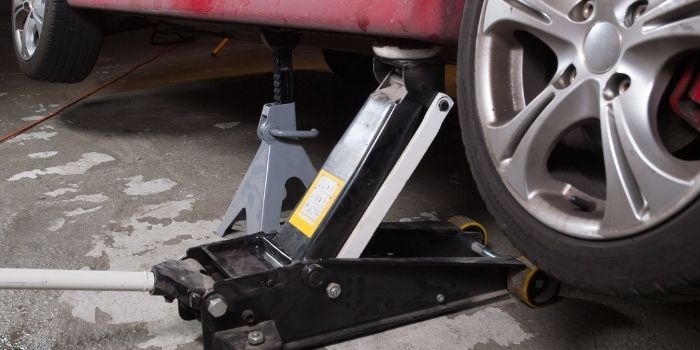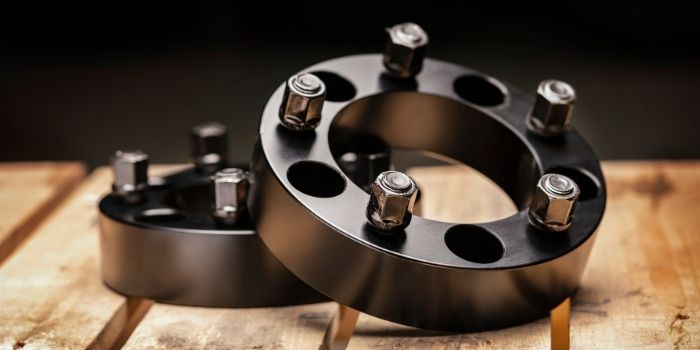
Wheel spacers are becoming more popular day by day for a variety of reasons.
When put correctly, wheel spacers give off a unique aesthetic that elevates the appearance of your vehicle to a whole new level.
Of course, it’s not just about looks; they also provide a host of advantages on both the street and the track.
But are wheel spacers safe, should you use them on your vehicle, and where exactly should you put them?
In this detailed article, we’ll go over all you need to know about the much-debated safety of wheel spacers.
What are Wheel Spacers?
Wheel spacers are precisely engineered circular discs that sit between your vehicle’s wheel hub and the wheel itself.
Think of them as the “extenders” that give your wheels a little more breathing room—without changing the tire size.
Wheel spacers come in a range of thicknesses, typically from 3mm to 25mm, allowing you to fine-tune how far your wheels sit from the hub.
They are manufactured from high-strength materials such as aircraft-grade aluminum alloys, steel, or even hub-centric aluminum, each chosen for optimal strength-to-weight ratio and durability under high-stress conditions.
Choosing the right spacer requires attention to bolt pattern, hub bore diameter, and load rating—because precision matters.
Too thick, and you risk stress on your suspension and wheel bearings; too thin, and the handling benefits may be negligible.

What Do Wheel Spacers Actually Do?
Wheel spacers are engineered to create extra space between the wheel and hub assembly, and this small gap can have a surprisingly big impact.
By increasing the wheel’s offset, spacers widen the track width—the lateral distance between tires on the same axle.
A wider track enhances stability, cornering grip, and overall handling, even if the tire size remains unchanged.
They also solve clearance issues. Wheels that sit too close to the wheel well, suspension components, or brake calipers can rub or scrape during turns.
Spacers provide just enough room to prevent these problems, making them essential for vehicles running larger or wider aftermarket tires.
Beyond function, spacers can improve stance and aesthetics. They push wheels closer to flush with—or slightly beyond—the fender line, giving a more aggressive, balanced look.
Additionally, by subtly repositioning the wheels, spacers can enhance traction.
The slight outward shift increases leverage between the tire and the road, improving grip under acceleration, braking, and cornering.
Wheel Spacer Types: Hub-Centric vs. Lug-Centric
Wheel spacers are broadly classified into two types: hub-centric and lug-centric, and the distinction lies in how they align the wheel with the hub.
Hub-Centric Spacers: These spacers are precisely centered by the wheel hub.
The spacer’s hub bore perfectly matches the hub’s wheel-centering flange, ensuring the wheel sits exactly where it should.
This eliminates misalignment, reduces vibrations, and is generally considered the safer and more precise option.
Lug-Centric Spacers: These spacers rely on the lug nuts to hold the wheel in place.
The spacer’s bore is slightly larger than the hub, meaning it doesn’t perfectly center the wheel on the hub.
While functional, this design carries a risk of the wheel sitting slightly off-center, potentially causing vibrations similar to an unbalanced wheel.
So why use lug-centric spacers at all?
The answer is practicality and cost. Some vehicles—especially low-production models—have unique hub diameters.
Manufacturing hub-centric spacers for every specific hub is often economically unfeasible.
A single lug-centric spacer design, however, can fit a wide range of vehicles, making it more versatile and cost-effective for manufacturers.
What are corrugated rim spacers – are they different?
Corrugated rim spacers are a specialized type of wheel spacer designed with a series of ridges or grooves (corrugations) along their surface.
Unlike standard smooth spacers, the corrugations help distribute load more evenly across the hub and wheel, reducing stress on both components.
This design can improve the structural integrity of the spacer, making it more resistant to bending or deformation under high torque or heavy loads.
These spacers are often used in off-road vehicles, trucks, or performance cars where wheels are subjected to extreme forces, larger tires, or aftermarket brake upgrades.
The corrugated design also allows for slight adjustments in fitment, helping the spacer stay firmly in place and reducing the likelihood of vibrations compared to traditional spacers.
Essentially, corrugated rim spacers combine the performance benefits of a standard spacer with enhanced durability and stability, making them a preferred choice for demanding applications.
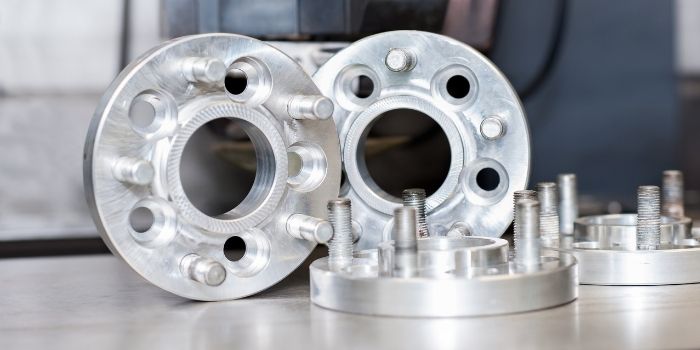
Why to Install Spacers On Wheels – Pros and Cons of Using Them
Wheel spacers can enhance both the performance and aesthetics of your vehicle, but like any modification, they come with trade-offs.
Proper installation is critical—incorrectly fitted spacers can cause vibrations, uneven wear, or even safety hazards.
When used correctly, however, they are safe for daily driving, spirited on-road use, and even off-roading.
Pros of Wheel Spacers
Improved Handling – By widening the track width, spacers increase lateral stability, improve cornering grip, and make the car feel more planted—especially during aggressive maneuvers.
Room for Larger Tires and Brake Upgrades – Spacers create extra clearance, allowing installation of bigger or wider tires, aftermarket wheels, or larger brake calipers that would otherwise rub against suspension components or wheel wells.
This is useful for both on-road performance upgrades and off-road setups.
Enhanced Stance and Appearance – Wheel spacers can push your wheels flush with—or slightly beyond—the fender line, giving a sportier, more aggressive look.
Even mild spacers improve presence, while aggressive setups create a unique aftermarket flair.
Easy Installation and Affordable Upgrade – Installing spacers is as simple as changing a tire.
With minimal tools, most wheels can be upgraded in about 15 minutes each, making it a straightforward garage project.
Prices are reasonable, with a quality set of four spacers typically costing around $130–$150, delivering a substantial visual and performance impact for the investment.
Cons of Wheel Spacers
Increased Steering Effort – Widening the wheels changes the leverage on the steering system.
This is most noticeable at low speeds, though modern power steering systems usually mitigate the extra effort.
Slight Reduction in Ride Quality – Spacers push wheels further from the suspension’s designed geometry, which can slightly affect ride comfort.
Larger spacers amplify this effect, so extreme setups may feel harsher over bumps.
Additional Wear on Suspension Components – By changing the wheel’s offset, spacers increase stress on wheel bearings, hub assemblies, and suspension components, potentially reducing their lifespan.
Potential Warranty Implications – Some manufacturers may consider spacers a modification that impacts vehicle warranty coverage, so it’s important to verify before installation.

Where are Wheel Spacers Located – Do You Need Them on Both Axles?
Wheel spacers are installed directly between the wheel hub and the wheel. They sit on the hub, with the wheel bolted onto the spacer instead of the hub itself.
This small but critical placement ensures the wheel is properly aligned and centered while slightly moving it outward from the vehicle’s chassis.
Do You Need Spacers on Both Front and Rear?
Not always—but it depends on your goal:
For Handling and Stability: If you’re widening the track for improved cornering or road grip, it’s generally recommended to install spacers symmetrically on both axles.
Uneven track width can negatively affect balance and handling dynamics.
For Clearance or Aesthetics: If you’re just creating space for wider tires, larger brakes, or achieving a flush stance, you may only need spacers on the axle that requires it.
Many off-road setups, for example, use spacers only on the rear wheels to fit larger tires.
Caution: Never mix different spacer thicknesses front and rear without careful consideration, as this can alter handling, steering response, and suspension geometry.
In short, the placement of spacers for wheels depends on your modification goals, but for performance and symmetry, matching spacers on both front and rear axles is usually the safest approach.
FAQs
Do wheel spacers affect alignment?
Wheel spacers can have an effect on your vehicle’s alignment. In most cases, however, the effect is minimal and won’t cause any problems.
If you’re considering using wheel spacers, it’s a good idea to have your alignment checked beforehand, just to be safe. Once you’ve installed the spacers, have your alignment checked again to make sure everything is still in order.
Who should put on spacers for my vehicle’s wheels?
Wheel spacers should ideally be installed by someone with mechanical experience, as proper fitment is critical for safety and performance.
Most commonly, they are fitted by professional mechanics or performance shops, which ensure correct hub alignment, bolt pattern match, and torque specifications.
Experienced DIYers can also install spacers at home if they have the right tools—like a torque wrench and jack—and understand wheel centering and clearance requirements.
What’s the difference between a wheel spacer and a wheel adapter?
A wheel spacer is a small disc that fits between the wheel and the hub. Its purpose is to create extra space between the two, effectively moving the wheel outwards.
A wheel adapter is similar to a wheel spacer in that it also sits between the wheel and the hub.
However, rather than just creating extra space, a wheel adapter actually changes the bolt pattern of the wheel, allowing it to fit a different kind of vehicle.
Both wheel spacers and adapters can be used to change the appearance of your vehicle and make the wheels look bigger.
However, only wheel adapters will actually allow you to use a different kind of wheel altogether.
Conclusion – Are Wheel Spacers Good or Bad for Your Car?
Wheel spacers aren’t inherently good or bad—they’re a tool that delivers benefits or drawbacks depending on how they’re used.
When properly selected and installed, spacers can improve handling, increase track width, provide clearance for larger tires or brakes, and enhance your car’s stance.
However, improper use—wrong size, uneven installation, or low-quality materials—can cause vibrations, added stress on suspension and wheel bearings, and even safety risks.
Doing your research and understanding the pros and cons is essential, and if there’s any doubt, consulting a professional ensures that the spacers deliver their full performance and visual benefits safely.

Based in Orem (Utah) John Paterson graduated from Utah Valley University and has begun writing in 2009. He has a large wealth of experience in writing articles related to cars, automotive repair, wheels, cleaning/maintenance, and much more. He has also written instructional articles in a similar niche for a few online publications as well. Currently, he works as a mechanic in his personal garage shop where he loves serving his countrymen from his heart.

